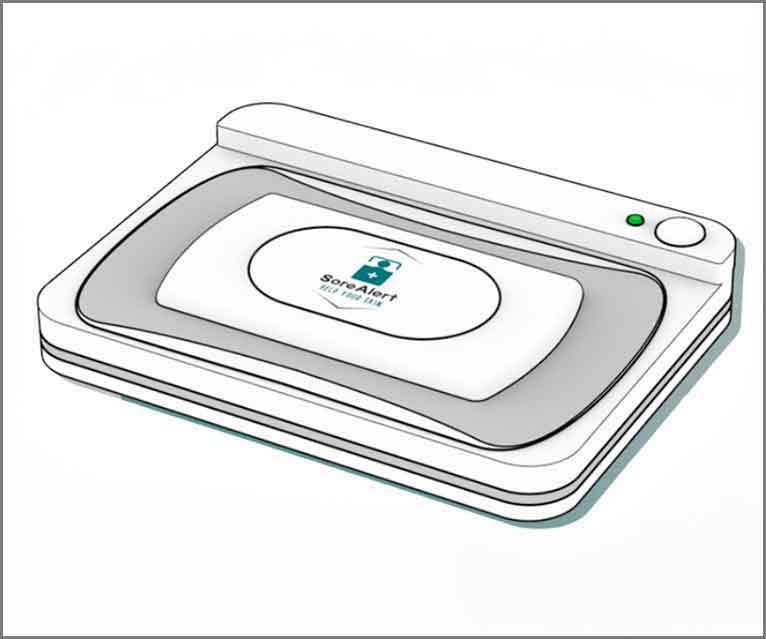Every year, over 3 million immobile people worldwide suffer from severe, mostly preventable pressure ulcers, with around 0.4 million in Germany. Pressure ulcers not only cause personal suffering but are also time-consuming and costly to treat. Current prophylaxis methods require significant commitment from nursing staff and do not provide continuous security. Therefore, there is an urgent need for individual and continuous monitoring for effective pressure ulcer prophylaxis. SoreAlert, a potential spin-off from Fraunhofer EMFT, addresses this need with a smart patch that allows for automated monitoring of at-risk body areas and provides early warnings for pressure ulcers.
Prevention of pressure ulcers in nursing care
SoreAlert sensor patch

Project SoreAlert:
Pressure ulcers are costly and care-intensive wounds caused by prolonged pressure on damaged tissue, which can lead to severe surgeries or even death. The most important prophylactic measure is regular repositioning, but the individually optimal intervals ("repositioning frequency") cannot currently be reliably determined. This leads to over 400,000 new pressure ulcers annually in Germany, with treatment costs exceeding 2.5 billion euros, plus several billion euros for prevention in care. Crucial for effective prophylaxis is adjusting the repositioning frequency, where existing aids provide only limited support. An innovative solution is the sensor patch SoreAlert, which continuously measures tissue perfusion and assesses individual pressure ulcer risk using AI algorithms.
The actual wound development is detected before it becomes visually apparent. If necessary, alarms and action recommendations are sent to prevent early wound formation. The underlying technology has already been tested in a feasibility study with 60 patients at the hospital (KIPRODE) and has shown promising results. More information can be found in the publication: MDPI

SoreAlert is developing a reusable sensor patch with an interchangeable adhesive unit that patients can wear for several days. A base station receives data from the sensor patch and allows for easy integration into existing nursing IT systems. SoreAlert thus improves the quality of life for those affected through effective prophylaxis and relieves nursing staff. The direct time savings from the individually adjusted repositioning frequency significantly reduce costs for nursing services and decrease stress for caregivers. Additionally, the healthcare system is alleviated, as fewer wounds occur, resulting in savings on long-term treatment costs.
Learn more about SoreAlert's smart sensor patch: klick here